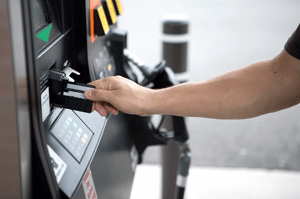How to Set Up a Fleet Fuel Card Program


When carefully planned and implemented, a fuel card program can provide numerous benefits to fleets of all sizes, including reduced costs, streamlined operations, improved efficiencies and a boost in productivity.
But the key to the development process and to an effective program is “dotting the i’s and crossing the t’s.” Hastily implementing a program with little thought or attention to detail will reap few if any long-term benefits and could even cause problems down the road.
Far From Your Average Card
Simply put, a fuel card program saves time and money by providing monitoring and reporting capabilities that help fleet managers gain control over operating expenses. Rather than using conventional credit or debit cards for making purchases, drivers are issued fuel cards.
While the cards looks like conventional credit or debit cards, that’s about the only commonality, especially when you consider that using fuel cards helps fleet managers:
- Prevent Unauthorized Purchases—Purchase controls and reporting capabilities and individual driver PINs help prevent fraud or card misuse, such as extra fill-ups, convenience store purchases and charges after hours.
- Track Expenses—Monitoring and tracking spending in real-time and customized and automated reporting provide information fleet managers can immediately act upon. And with no paper receipts to worry about, administrative work is reduced and allows fleet managers to focus on what matters most.
- Boost Productivity/Increase Customer Satisfaction—With a large network of fuel providers, drivers are doing what they are paid to be doing — serving the customer — and not wasting time and gas looking for accepting locations.
So what steps are necessary to set up a fleet fuel card program correctly? Let’s look at three key best practices to lay the groundwork for an effective program.
Meet with Providers to Discuss Options
Knowing the options offered and determining what best fits your fleet’s needs are key to getting the greatest ROI. Areas to cover with a provider include:
- Determining the purchases that cards allow, such as fuel only or fuel and other purchases.
- Deciding whether cards should be assigned to the vehicle, driver or organization.
- Setting fuel card controls and purchase alerts, including gallon limit or dollar limit per transaction, number of transactions per day, time of day and day of week limits, type of fuel allowed and geographic lockout limits.
- Size and geographical areas of fueling station network and rebate programs or at the pump discounts offered.
- Determining reporting capability needs and when, how and in what format reports are delivered — for example, a daily, weekly or monthly Excel doc.
- How cards are activated and cancelled, how driver PINs are assigned, deleted or changed and how long each process takes.
- Card fraud or misuse detection capabilities and notification time frame.
- Establishing provider contact information to handle any issues.
- Determining program administration responsibilities and what is expected from the provider and expected from your organization.
Pre-Launch Preparations
Laying the groundwork, establishing timelines and making careful preparations, helps ensure a seamless, successful launch, so make sure that:
- Driver data is complete and accurate, for example drivers are in the correct vehicle.
- You provide your card provider with driver information, including name, address, phone number, vehicle number, model, make and year and VIN.
- Establish a launch timeline and communications timeline and set the program startup date.
- Determine the date you want cards sent out to drivers making sure not to send cards out before the activation date.
Keep the Communication Lines with Drivers Open
The support of your drivers is essential to the success of your program. So keep them in the loop. Doing so, will help them be more receptive to change and on-board with the program. To that end:
- Encourage input and questions from drivers.
- Send out an advance email to drivers that explains the program and gives the start date. In the email, also tell them to be on the lookout for a packet from the fuel card provider that includes an introduction letter, explains the details of the program and contains their fuel card and PIN.
- Send a follow-up email to inform drivers they should have received the package from the fuel card provider and if they did not, who they should contact to correct the problem.
- After the start date, send out an email that addresses common questions and issues with the cards and if necessary, offer training or seminars to help tackle bumps in the road.
- If there is resistance, for example a driver used to doing business with a certain station that is not in the network, contact your provider to see if they can be added if you feel it’s warranted.
As with most changes in any business, the first few weeks may not be the smooth sailing you would like. Be patient, everyone is just getting used to the transition and asking lots of questions is normal. Just keep in mind, the hard work is over. As drivers get used to the change, using fuel cards will be a good thing — not just for them, but also for you, your organization and your bottom line.
Learn about PS Energy’s Fuel Card program.